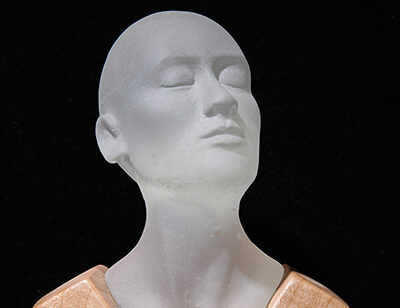
Steve has been a NWSSA member and avid symposium attendee since ‘93. He has been the Newsletter interviewer for five years. He works as a residential remodeling contractor and lives in Fall City, WA, with his wife Jennifer Sumner. There he works in a 22’x28’ stone-sculpting studio he built himself that includes 14’ high vaulted ceilings, large skylights, indoor and outdoor carving areas under the same roof and heavy duty beams for hoisting stone. (He still needs to finish the wiring, plumbing, insulating and sheet rock, but it’s a good place to work.)
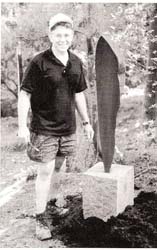
Here he responds to the interview questionnaire:
What is your life history related to being an artist? I’ve always had a spontaneous and creative response to life which finally manifested itself in a college freshman sculpture class. Eventually, I received a B.A. degree in Art and English Lit., with a focus on sculpture.
Before that, I suppose I believed an artist was someone who could draw well.
I seemed to have a natural desire to create in three dimensions and I got some encouragement. Further study during the wild 1960s with an accent on abstract expressionism, anti-war activities and all manner of artistic experimentation was both exciting and confusing (of course, then, stone carving was something done by ancient civilizations). Subsequently, I got married, had two beautiful children and tried to figure out how to make a living, in that order. I worked as a welder, carpenter and builder. Of course, I always managed to set up a sculpture studio/shop wherever I went, but without much output or momentum. At various times I would attempt to shut down the studio and toss out my art (mostly welded steel pieces) on the grounds that it was profoundly impractical. Thank God, this never worked and the artistic predisposition would not be denied.
Eventually, after working with the book The Artist’s Way by Julia Cameron (one of the few books I’ve seen which beautifully advocates the inner artist) and loosening a few of my favorite blocks/excuses, and then attending “a symposium” which Rich Hestekind kept raving about, I started sculpting stone. I will always remember coming onto the field at camp B for the first time in summer of ‘93. I had never seen so much intense creating in one place; the air seemed to pulse with it. I was thrilled and frightened. Did I really want to make stone sculpture? Ruth Mueseler encouraged me to cut loose and try. Since then there’s been no turning back. So this was the re-emergence of my artist-self for which I am most grateful. The personal support in the context of an active learning/doing community was my view of Heaven. The yearly events gave me the chance to focus on creating my art. (This was also the fulfillment of a long term interest in intentional community, which Jennifer and I had studied. The Symposiums are some of the best short-term communities I have experienced.)
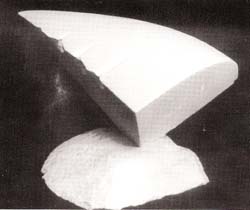
Who or what has influenced your art form? So many things have, but at the moment I think it is Nature and Spirit. My favorite place to be is in the paradox between the physical and spiritual world(s). Stone sculpture seems an apt way to express this; a very three dimensional material attempting to communicate a “spiritual” meaning or reality. Of course, artists like Brancusi and Noguchi, who seemed to play in this arena and David Smith whose “heroic” conviction impressed me along the way. Now I am impressed by the work and approach of many artists and by chunks and hunks of stone which call to me.
Why is art important to you? It is the artistic process that is most important to me. The art product is secondary. For me the key words Explore, Discover, Create define the necessary phases of the process.
These seem to go on simultaneously and continually if you are “in the flow” and can help you get back on track if you are not.
One major lesson was to learn to complete my work so that I could explore the next possibility. Perhaps I didn’t like to confront completing a piece and facing success or failure.
Art is important as a way of perceiving the world and life experience, different than the analytical, purely rational, or scientific. It seems to cross boundaries to include many domains and thus is my ultimate playground (you need to remain playful to do all the necessary work). Of course, being an object maker in a world seemingly too full of objects is a paradox, but hey, I like a good paradox.
By definition my stone sculptures are non-representational (as distinct from abstract) forms. They are intended to be experienced on their own terms, in their own integrity and have no intentional imagery. I hope they elicit a unique and personal response from the viewer. You could also say they are sensual, curvaceous, use natural stone textures with polished surfaces, and often have a vertical, “balancing” orientation. Most are carved for 360 degree effect and the shapes invite you to explore the whole piece. They are “direct carved” (without much pre-planning) using as much intuition and unconscious process as I am capable of at the moment. I attempt to enter an “exploration” process that includes the universe, the stone, and little ol’ me. I seem to do this for as long as possible because it’s so enjoyable. Then I start to resolve and finalize the forms which have been “discovered”, using a more analytical process, obsessing about things like proportion, relationships, balance, transitions, truing curves, surfaces, mounting, etc. (Creation and Completion.)
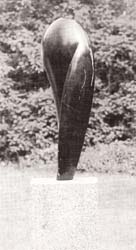
I have recently reached a point where I see the value of sculpting in the time honored way: being able to bring my idea to the stone and carve a piece which has been pre-conceived.
While attending the Marble/Marble symposium in Colorado this summer I had the somewhat chilling experience of staring at a big block of white marble and wondering what to do. So I made maquettes and drawings and and got a piece going, only to discover that once I got the piece moving I was once again direct carving (yea). What was I afraid of?
How do you get your ideas? They pop out of my experience. A stone may suggest a shape. My mind engages and expands on this (the inner CAD program) and an exploration begins. Of course I am drawn to certain shapes which I seem to find meaningful (personal form language). Much like a poem or improvisational jazz piece I attempt to piece/shape elements together towards a meaningful end. And now the problem is how to process ALL the ideas that flood forth. It seems that part of the art is choosing the best of these possibilities.
What are you trying to express? Love. Also beauty (these may be the same thing). Also something about the spiritual journey, and the paradox of the spiritual/physical balance. I am trying to create a “form poem” that speaks to these themes. I would like my art to speak lovingly, encouragingly to the souls of others. I would like my sculpture to exude love and provide insight.
Describe a recent piece. “Throwback” (see cover photo) is a piece that evolved over the last year. I found the cascade basalt stone in a Mt. St. Helens road cut treasure trove of natural shape and hauled it home. It had an ax-like shape I liked so I experimented with it at the ‘99 symposium, getting it somewhat roughed out. During the year I continued playing with it, moving the basic shape around. This led to the middle phase (which I seem to always go through) where the piece is partly formed, is awkward (like the teenage years) and I lose faith that it could be a successful piece, and think maybe I should quit sculpting. I forced myself to keep going (next step, next step….) until finally it started to “hum” (to work) as a composition, faith was restored. This was followed by a period of obsessing about details, refining curves and finishes until it felt complete.
The title usually emerges in the process of creating the piece and is another way of interacting with the sculpture. It is not intended to define it.

This occurred while working full time at my remodeling business, sometimes with long gaps between studio sessions. I also had two other pieces ongoing during this same time.
What stone do you prefer to carve? What scale or size do you work in? Many. Basalt, fine sandstone, granite, marble, limestone each has such unique qualities.
If I had to choose one it would be basalt for its depth of color, uniformity of material and beautiful natural skin. I like human scale, that is, big enough for a human to relate to, walk around, touch, consider. That would fall in the 1’ to 7’ high range, 100 lb. to 3 tons. Also that would be the current limits of my studio.
What tools do you primarily use? All manner of electric and air powered grinders and polishers. I highly recommend the Milwaukee 5″sander/grinder, variable speed, 12 amps (cat no. 6156-20). The variable speed is very handy for different situations, while 12 amps provides good power.
Much of the rough out is done with diamond blades and cup wheels. Otherwise I use silicone carbide cup wheels and sanding discs a lot. I am also carving more with air powered chisels. Each stone has its own requirements: this summer I discovered that none of the several diamond matrix blades I have would cut Yule marble (a soft marble). It required a blade with electroplated diamonds for rapid cutting.
How much work do you complete in a year? Currently 3-4 medium size pieces. And, I am working on increasing my output, which is much aided by having a good studio. I am working on a commission in Yule marble for one of my remodel clients.
Where do you exhibit your work? Mostly in group shows, through NWSSA and through N.K. Jordan’s yearly show.
I will have a piece in the Bellingham 2000 show in November and am planning a solo show for November next year.
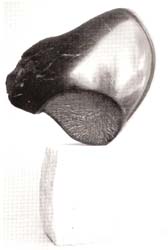
What have been your satisfactions in your life as an artist? What have been your obstacles and challenges? There is great satisfaction in the opportunity to do the work and to do it with others. Of course each piece is satisfying. Being able to create something which didn’t exist before is a thrill. Selling them is satisfying, but mostly I feel thankful to be “on path” as an artist, where ever that might lead. Any obstacles seem to come from within me in the form of being unfocused and somewhat indecisive, also the tendency to like taking naps.
What are you looking forward to? That my next sculpture will be better than my last, that I will be more productive, that my work will be of value to others, But mostly I look forward to the rest of the journey, together. It’s been fun so far.
Many thanks, Steve Sandry (You can reach Steve via e-mail or by phone at 425-830-1552.

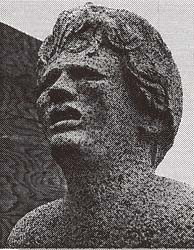

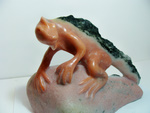

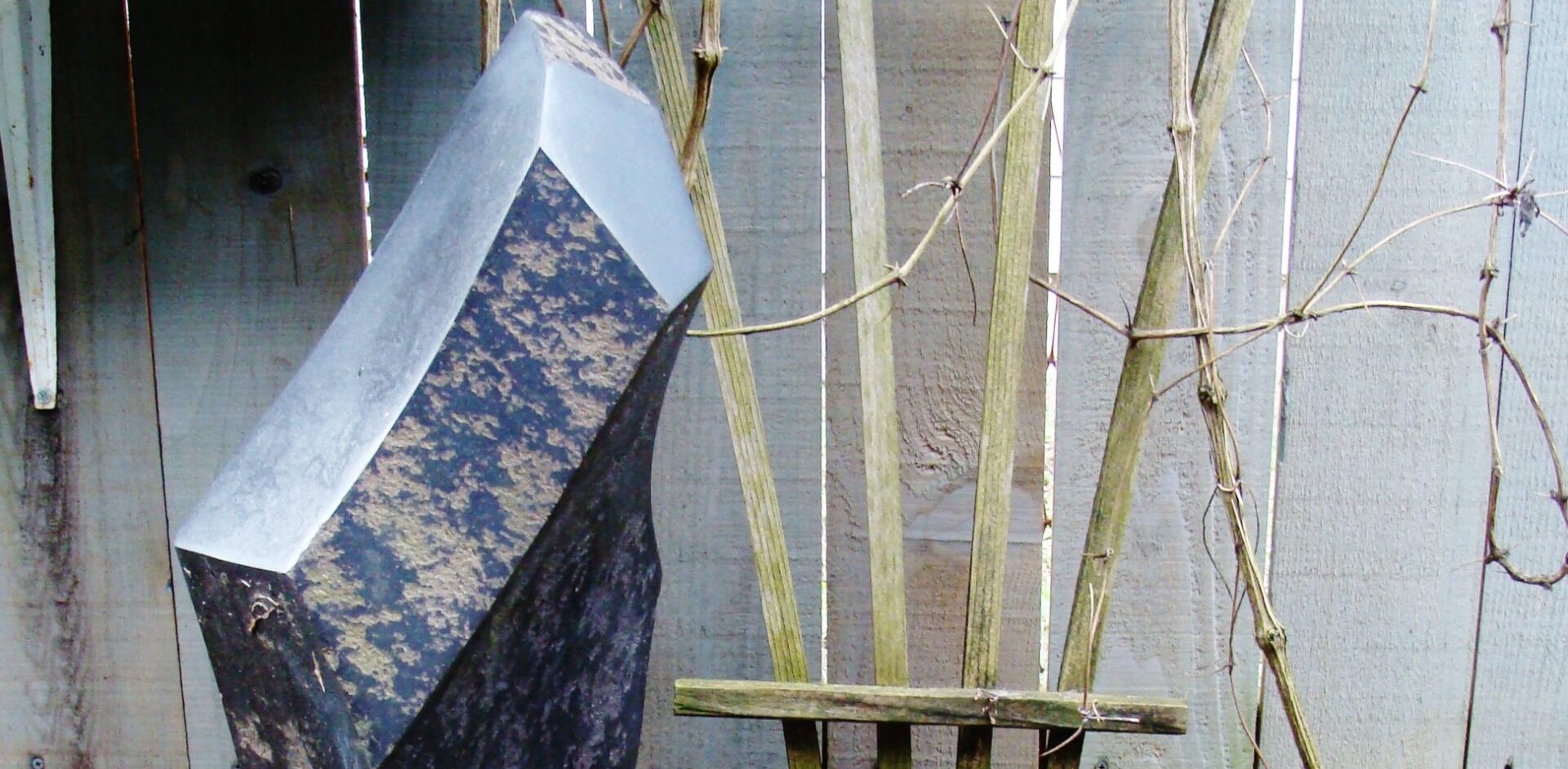

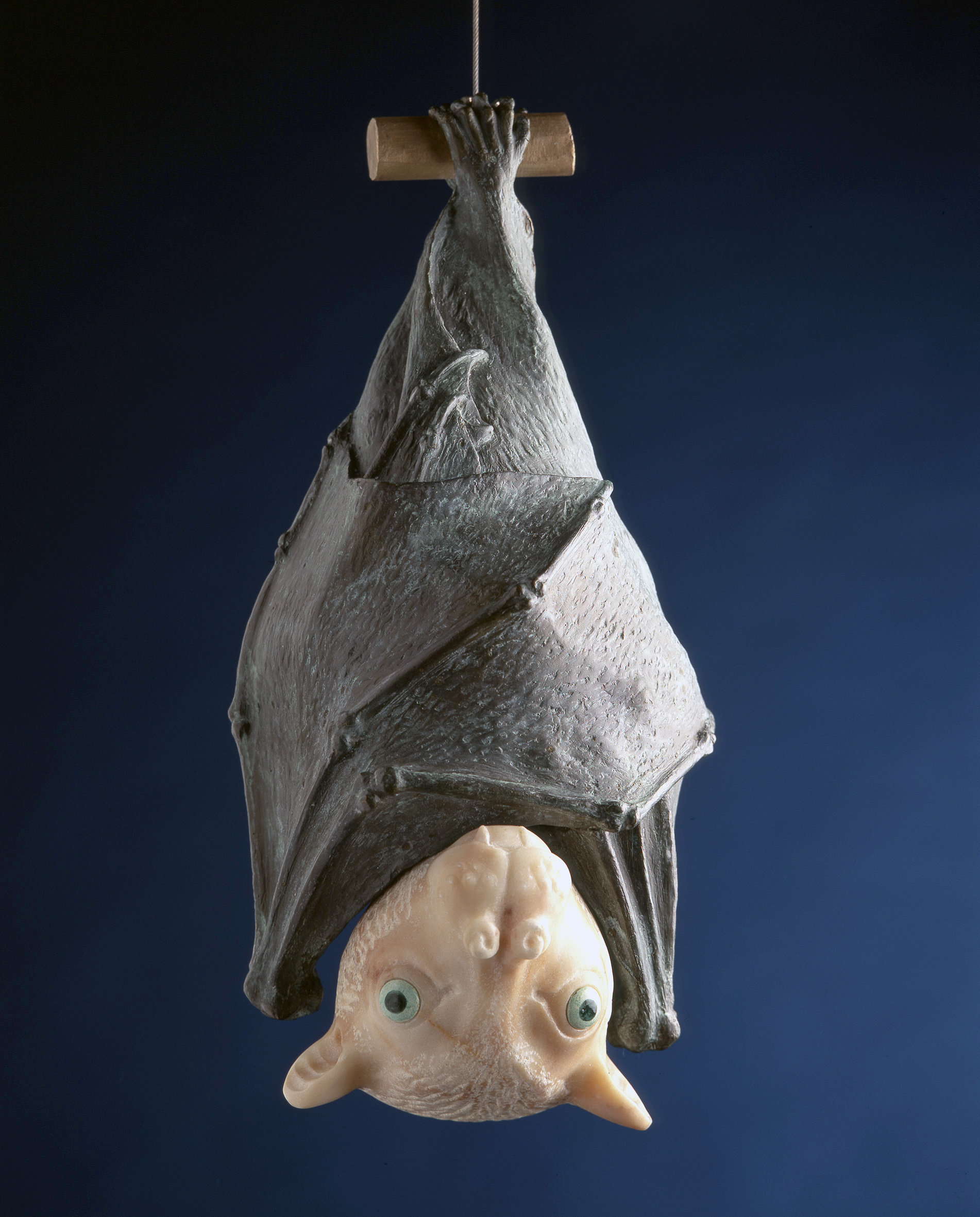
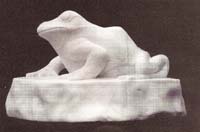

We need some kind of descriptive text here.